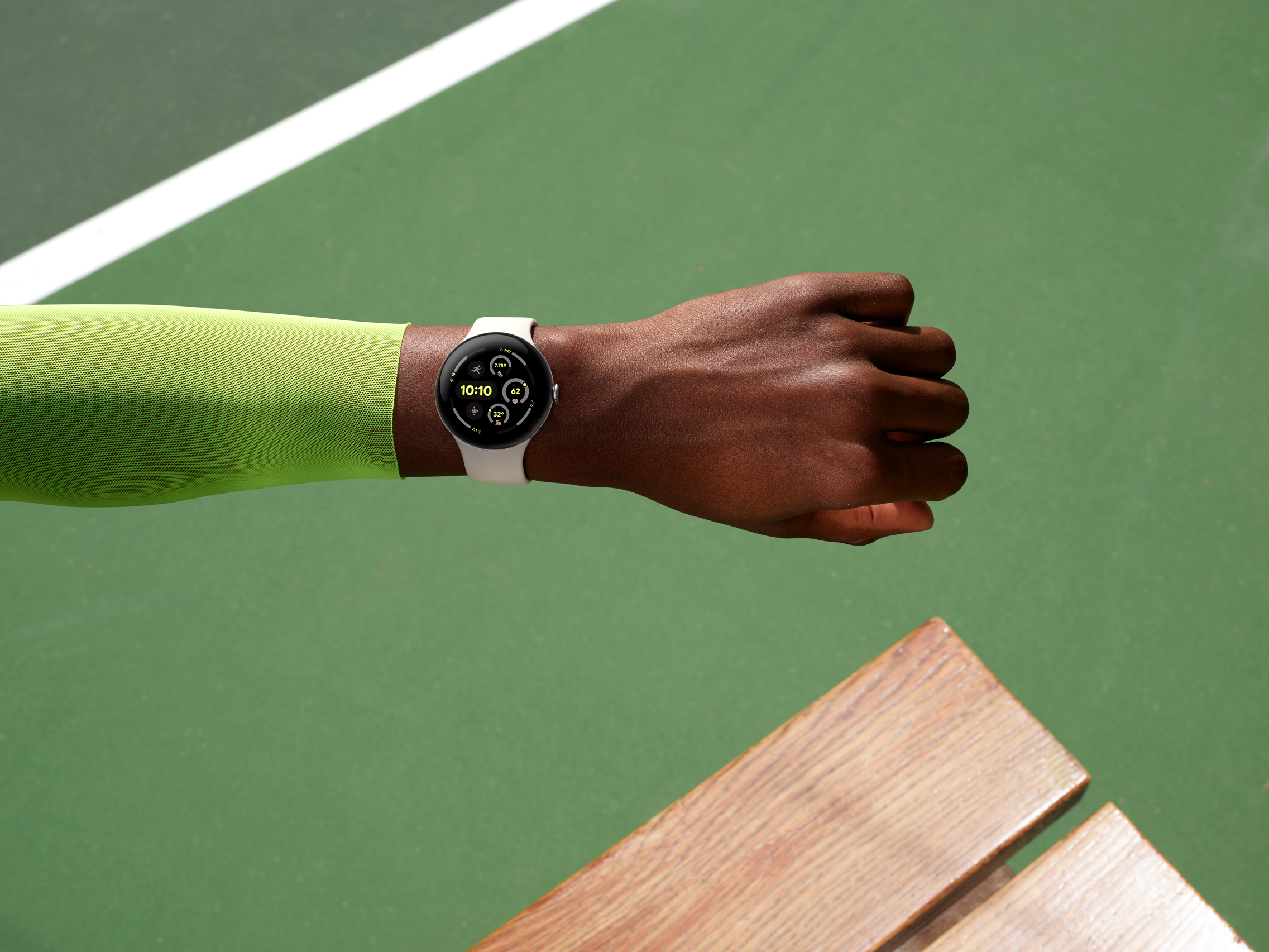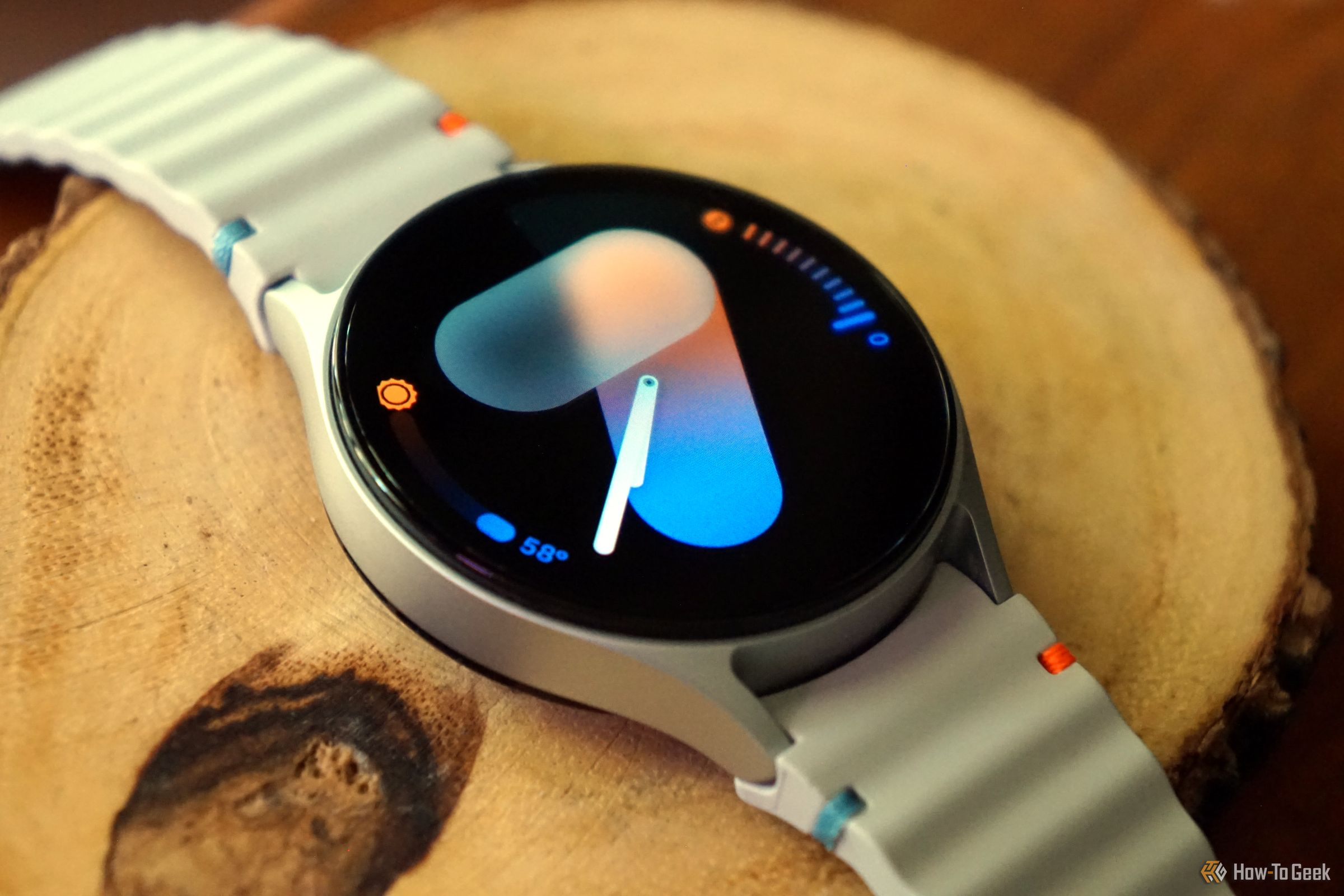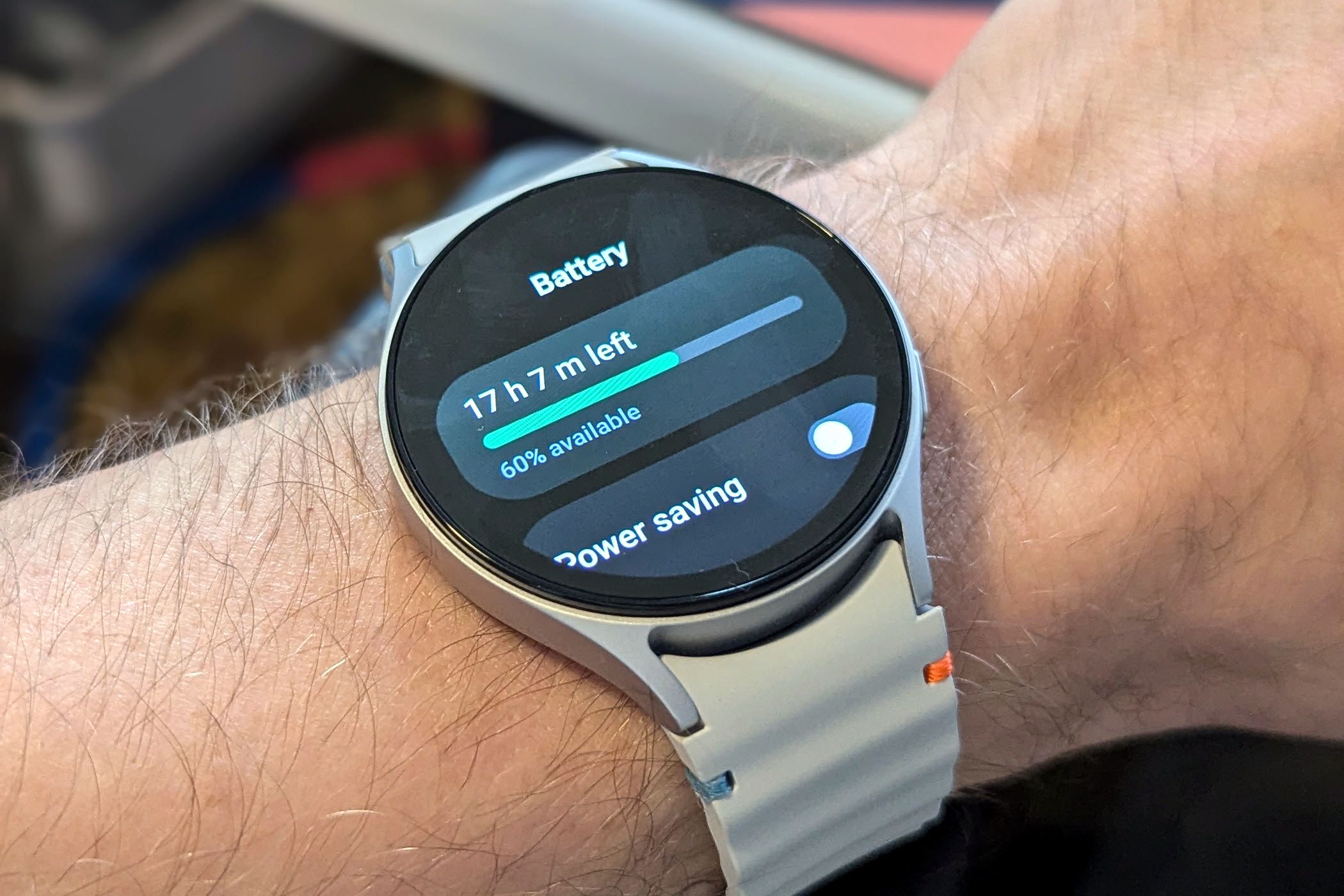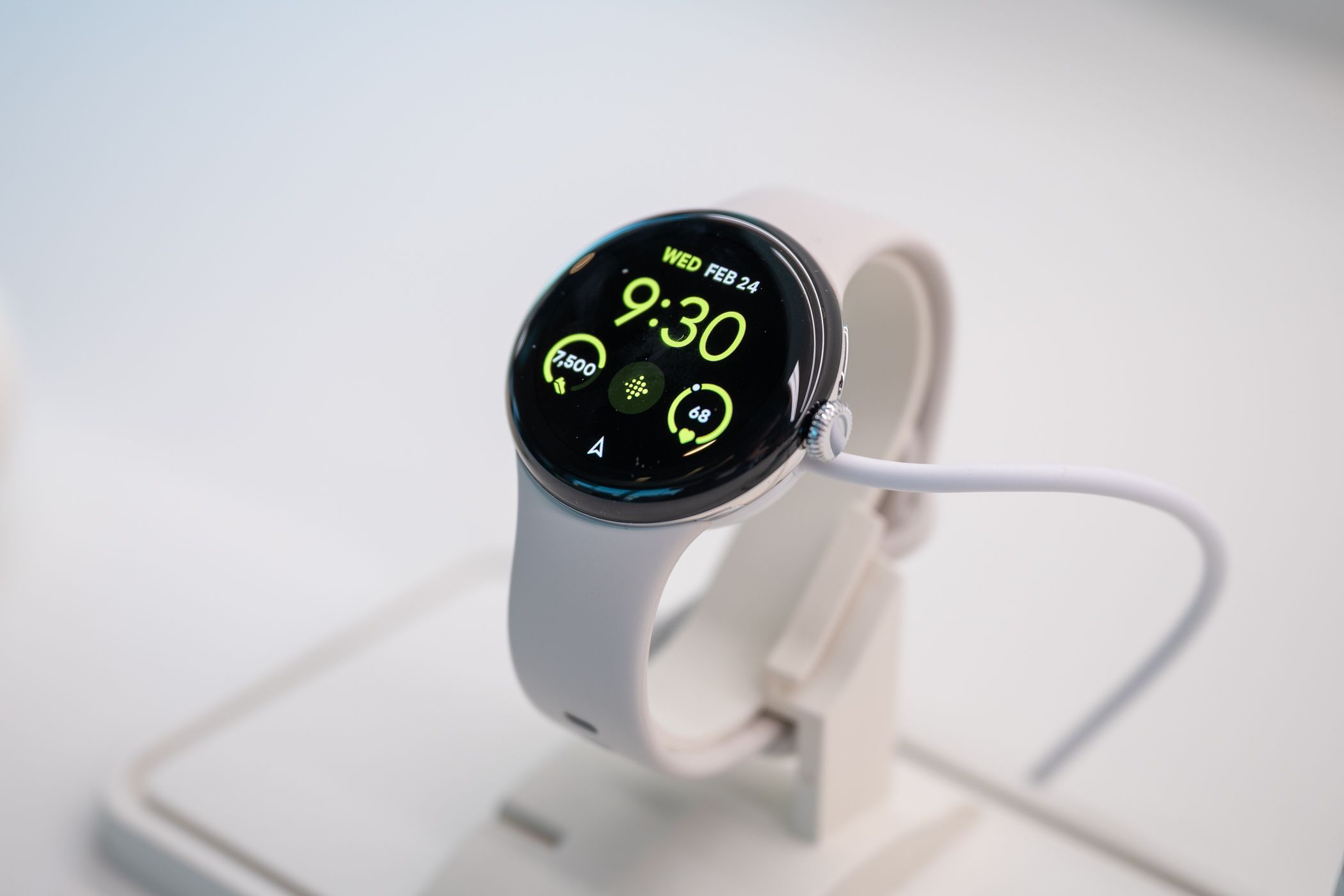Key Takeaways
- Pixel Watch 3 is available in 41mm and 45mm with various finishes, while the Galaxy Watch 7 is available in 40mm and 44mm sizes. You can choose between Bluetooth and LTE models.
- Both watches have a similar circular aluminum chassis, but the Pixel Watch 3 has a unique domed display (albeit with thicker bezels), while the Galaxy Watch 7 has a flat-screen (thinner bezels).
- Pixel Watch 3 provides a seamless Wear OS 5 experience with standard health-monitoring features, while the Galaxy Watch 7 runs on a custom One UI 6 skin and features the BioActive Sensor.
At the “Made by Google” August event, the California-based tech giant revealed the new Pixel lineup, which includes the Pixel Watch 3. This watch competes directly with Samsung’s newly-launched Galaxy Watch 7. If you’re confused between the two devices, here’s a detailed comparison between the two models.
Price & Availability
The Pixel Watch 3 comes in two sizes: 41mm and 45mm. Regarding colors, the 41mm variant comes in three finishes: Matte Black, Polished Silver, and Champagne Gold, while the larger variant (45mm) is available in Matte Black, Polished Silver, and Matte Hazel. For pricing, you’re looking at the 41mm model for $349.99 with Bluetooth/Wi-Fi, $449.99 for LTE, or the 45mm for $399.99 with Bluetooth/Wi-Fi, $499.99 for LTE. It will be available on September 10th.
The Galaxy Watch 7 is also available in two variants: 40mm and 44mm. The smaller variant with Bluetooth connectivity costs $299.99, while the one with cellular connectivity costs $349.99. If you go with the larger variant, you’d have to spend $329.99 for the Bluetooth version and $379.99 for the cellular version. You can pick the smaller variant in the Green or Cream case, while the larger variant is available in the Green or Silver case.
Both Smartwatches Have A Similar Form Factor
On the surface, both the Pixel Watch 3 and the Galaxy Watch 7 have a circular aluminum chassis that houses the screen. However, the Pixel Watch features custom domed glass (a version of Gorilla Glass 5) over the screen, while the Galaxy Watch has a flat Sapphire Crystal glass to protect against scratches. This results in a slightly different appearance, wherein Google’s wearable might appeal more to those after a unique design. That’s not to say that the Samsung smartwatch doesn’t look good: the flat screen offers simplicity and elegance for those who’re into it.
For those wondering, the Pixel Watch 3’s dimensions run true to its sizes: the 41mm (31 grams) version has a diameter of 41mm, while the 45mm (37 grams) version has a diameter of 45mm; both variants are 12.3mm thick. The Galaxy Watch 7 variants are slightly bigger than their sizes: the 40mm (28.9 grams) variant has a diameter of 40.4mm, while the 44mm (33.8 grams) measures 44.4mm in the center. Even though both watches come in a similar shape and size, the Galaxy Watch 7 has a sleeker casing.
When it comes to durability, both watches have a 5 ATM water resistance and an IP68 dust resistance rating. The Galaxy Watch 7, however, goes over and above its rival by surviving the MIL-STD-810H test for optimal functioning in harsh environmental conditions. All things considered, the Galaxy Watch 7 should be your pick for a slimmer and lighter chassis. On the other hand, if you’re bored of using and seeing similar smartwatches, the Pixel Watch 3 offers a novel design unlike any other option in the market.
Galaxy Watch 7 Offers A Bigger Display
The Pixel Watch 3 comes in larger sizes, so you’d expect the smartwatch to feature bigger displays, right? Surprisingly, that’s not the case. Due to their relatively broader bezels (4.5mm), both Pixel Watch models have smaller displays than their corresponding Galaxy Watch variants. Let me break it down for you.
- The Pixel Watch 3 (41mm) has a 1.25-inch, which is smaller than the 1.31-inch screen on the Galaxy Watch 7 (40mm).
- The Pixel Watch 3 (45mm) has a 1.41-inch Actua display, which isn’t quite as big as the 1.47-inch screen on the Galaxy Watch 7 (44mm).
Clearly, Samsung has done a better job maintaining slimmer bezels, which in turn help pack a larger screen into a smaller casing. Anyway, the Pixel Watch 3 features an Actua display (a term previously used for Pixel 8’s screen) with a pixel density of 320 ppi and a peak brightness of 2,000 nits (and a minimum brightness of one nit). The refresh rate has gone up from 30Hz on the Pixel Watch 2 to 60Hz on the Pixel Watch 3.
In comparison, the Galaxy Watch 7 ships with a Super AMOLED display with a pixel density of 330 ppi on the 40mm variant and 327 ppi on the 44mm variant. The peak brightness and refresh rate are similar to those on the Pixel Watch. In such a scenario, it’s the difference in the screen size that sets these smartwatches apart. Hence, if you’re after a bigger screen estate, the Galaxy Watch 7 would be a better choice.
Qualcomm SW5100 Vs. Exynos W1000
Like its predecessor, the Pixel Watch 3 runs on a combination of Qualcomm Snapdragon Wear 5100 (4nm) SoC and the Cortex M33 co-processor. While the former does the heavy lifting, such as running apps, the latter takes care of the lighter tasks, such as maintaining the always-on display. This way, the watch doesn’t use the main processor for every single task, thus improving the overall performance and efficiency.
Alongside the chipsets, the wearable sports 2GB of RAM and 32GB of eMMC flash storage. Connectivity options on Google’s smartwatch include 4G LTE, Wi-Fi 802.11, Bluetooth v5.3, NFC, GPS, and, for the first time, ultra-wideband for precise tracking via the Find My Device network. Besides, it has sensors like a compass, altimeter, 3-axis accelerometer, gyroscope, ambient light sensor, barometer, and magnetometer.
If you’re on team Samsung, you’ll get the latest Samsung Exynos W1000 (3nm) chipset, which draws significantly less power due to its advanced fabrication technology. Like the Pixel Watch, the Galaxy Watch also comes with 2GB of RAM and 32GB of storage, which should be enough for most users. While most connectivity options remain the same, Samsung packs in a dual-frequency GPS on its latest smartwatch, featuring two satellite signal bands (L1 + L5), which should result in more accurate results.
Unfortunately, the Galaxy Watch 7 (and even the Galaxy Watch Ultra) lacks the hardware to support features based on ultra-wideband technology, which feels like a huge miss for a flagship smartwatch in 2024, especially since the Pixel Watch 3 and Apple Watch Series 9 (and the models to come) already include it.
What About The Health Monitoring Features?
Over the years, manufacturers have started to equip their smartwatches with advanced health-monitoring features, and Google and Samsung are no different.
The Pixel Watch 3, for instance, ships with an optical heart rate sensor, red and infrared sensors for oxygen saturation monitoring, multipurpose electrical sensors for conducting ECG (capable of detecting high/low heart rates and atrial fibrillation), a sensor to measure skin conductance (cEDA), and a skin temperature sensor. While the device can do everything that the Pixel Watch 2 does, it also offers a couple of new features, including Morning Brief, Cardio Load, real-time running metrics (like ground contact time), and a couple of classics, like Fitbit’s Readiness Score, Body Response, and sleep tracking.
Yes, the Pixel Watch 3 has got a few upgrades, but additions like the BioActive Sensor and Sleep Apnea detection (FDA-approved) give the Galaxy Watch 7 an edge. Using the heart rate, blood oxygen saturation, and other electrical sensors, the watch can also record the advanced glycation end products (AGEs) index, a metabolism indicator. Apart from this, Samsung has also integrated two AI-based features across the Watch 7 lineup, which include Energy Score and Wellness Tips. The former is similar to Pixel Watch’s Readiness Score, while the latter helps users improve their weak aspects.
While some features on the Pixel Watch 3 require the Fitbit app, Samsung has also locked some tools to Galaxy phones. However, with the Galaxy Watch 7, you don’t need a subscription to use the advanced health monitoring features (at least for now).
You Get Wear OS 5.0 With Both Models
Both wearables run on Wear OS 5.0, Google’s latest smartwatch platform. However, the Galaxy Watch 7 features Samsung’s custom One UI 6 skin. So, you’ll get plenty of Google apps, like Assistant, Wallet, YouTube Music, and Maps on both of them. Further, Wear OS 5 is said to be 20% more battery efficient than the previous version.
The Galaxy Watch also provides some alternatives, like Samsung Pay and Bixby, but you can choose the ones you wish to use. While the basic functioning of both the user interfaces remains the same, Google and Samsung put their own spins on the models. Even though you can access the Play Store on both smartwatches, the Galaxy Watch 7 offers a few more customization options (and the digital rotating bezel).
The Pixel Watch 3 Doesn’t Last As Long
As I mentioned earlier, the Galaxy Watch 7’s 3nm processor draws much less power than the 4nm chipset (and the co-processor) on the Pixel Watch, and the difference is evident in the rated battery life for both devices. Both 41mm (306 mAh) and 45mm (420 mAh) Pixel Watch variants can last up to 24 hours with always-on display enabled and up to 36 hours in the power-saving mode. Regarding charging speed, the Pixel Watch 3 can take about 80 minutes to replenish 100% of the battery. In contrast, the 40mm (300 mAh) and 33mm (425 mAh) variants can last up to 30 hours with always-on display and up to 40 hours without the feature.
Which Is Right For You?
The answer is really simple. If you own a Pixel phone, you can utilize the Pixel Watch 3 to its full potential. Similarly, you can only use the exclusive Galaxy Watch 7 features like ECG, Sleep Apnea Detection, and Galaxy AI with Galaxy smartphones. It’s actually easier to pick a smartwatch that way.
However, if you own a Pixel and a Galaxy phone, you can choose the watch based on what appeals to you most. Moreover, the Pixel Watch 3 has a more appealing design, and using the Fitbit app is easier for those upgrading from an old Fitbit smartwatch. At the same time, the Galaxy Watch 7 provides more health-monitoring features and could be an easy recommendation for someone upgrading from a Galaxy Watch 3 or Watch 4.









